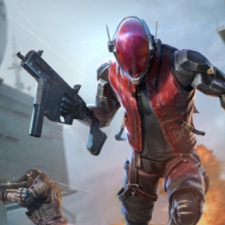NetEase Games, responsible for hit titles such as Eggy Party and Knives Out, launched a new first-person shooter battle royale game, Blood Strike, back in 2023.
Since its release, the game has surpassed 30 million downloads worldwide and has become the number one downloaded game in more than 15 countries.
To discuss the game, we spoke with its lead game designer Xie and Blood Strike operation planning executive Andrew to learn more about the early days of development and how the team has worked to make the game stand out among other Battle Royales - including its own.
We also touched on design elements that helped create a game that can work with low and mid-range hardware without losing out on overall performance.
PocketGamer.biz Can you tell us a little about yourself and how you got started at NetEase? What other projects have you worked on?
Xie: I've been with NetEase since graduating from university over a decade ago, and I have worked on several shooter games, including the well-known Knives Out. Our studio has immense experience developing and managing games in this genre, and we will keep delivering content that's much loved by players.
And what about Blood Strike? What is unique about this game within the Battle Royale genre, which has become incredibly popular over the years? How does Blood Strike stand apart from any of the competition out there?
The Battle Royale market is fiercely competitive, filled with mature products and large, well-funded teams constantly releasing new titles.
Our game stands out for three main reasons: the authentic shooting mechanics, the intense pacing of matches, and the progressive, fun gameplay. Plus, the game is well-optimised for various devices and has good compatibility to ensure the players' smooth gaming experience.
We started as a small team of fewer than 10 people. With limited resources, we had to make strategic choices about our development focus.Xie
And what can you tell us from the game development process? What were some of the challenges of making an FPS Battle Royale that looks and runs well on mobile? How did you tackle these challenges?
We started as a small team of fewer than 10 people. With limited resources, we had to make strategic choices about our development focus. After weighing our options, we decided to focus on the core of shooting games: how it feels to fire a weapon.
For shooter game fans, the feel of shooting is foundational. While others keep adding bells and whistles, we perfect the basics first, then build everything else around that.
Knives Out, another work of our studio, is still a top contender in Japan. Our studio prides itself on our deep FPS expertise, and even the whole Blood Strike team are true FPS enthusiasts. Each of them has a keen understanding of shooting dynamics and weapon handling.
When it comes to tuning the shooting experience, we've modularised the development process. We break down gunplay into elements like animations, special effects, sound, rhythm, and UI feedback, divide each element into even more detailed parts, and refine each part to our satisfaction.
It is our streamlined game model resource standard that has enabled the game to run smoothly on mobile. We strike a balance between rich, expressive scenes and a fluid combat experience.
For example, while some games might use over 1,000 different assets, we use just about 200. This significantly reduces resource strain, but it's a challenge to use them in a way that makes each capture point feel unique and visually diverse while still maintaining an uncompromised combat experience.
Our commitment to detail means that even with fewer assets, we manage to deliver a full, well-crafted combat experience to our players.
From a technical standpoint, how is the game's performance tracked and monitored? How do you ensure it’s working well on mobile and keeping up with demand?
We understand that players on all devices expect a smooth, high-quality game. That's why we've developed several art-related technologies that ensure stunning visuals without taxing performance.
It is our streamlined game model resource standard that has enabled the game to run smoothly on mobile.Xie
We continuously optimise for different phone models to guarantee a smooth experience on every device.
Fast forwarding to today, the game has just reached the massive milestone of 30 million installs; what do you credit to this success? Was there any big marketing push or any other avenues you’ve seen good results from, or simply just getting the game out there?
Andrew: We are truly grateful for our player community. Without their support and word-of-mouth praise, we wouldn't have reached as many people, and our game wouldn't have been this popular.
It might not sound like traditional marketing, but we really value communication with our players, including streamers, of course.
We're constantly reviewing community feedback, capturing their suggestions, discussing them, and integrating them into our development schedule. We try to stay responsive to those suggestions that are less complicated and require a quick response.
Finally, what comes next for Blood Strike? Is there any new content for fans to get excited about that you can share with us?
We're committed to continuously updating and enhancing both the gameplay and content of the game. We've just started with Blood Strike, and there's much more excitement and fun on the way.
We're always listening to our community, and thanks to their strong demand, you might see a new clan system sooner rather than later!
Also, we're planning to head to São Paulo, Brazil, for Gamescom LATAM in June this year. We're still ironing out the details and excited about the chance to connect with players in Latin America!




















